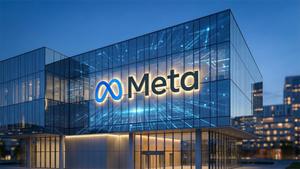
Glass and electronic component manufacturer Corning (NYSE: GLW) reported Q2 CY2025 results beating Wall Street’s revenue expectations, with sales up 24.4% year on year to $4.05 billion. On top of that, next quarter’s revenue guidance ($4.2 billion at the midpoint) was surprisingly good and 4.2% above what analysts were expecting. Its non-GAAP profit of $0.60 per share was 5.1% above analysts’ consensus estimates.
Is now the time to buy GLW? Find out in our full research report (it’s free).
Corning (GLW) Q2 CY2025 Highlights:
- Revenue: $4.05 billion vs analyst estimates of $3.87 billion (24.4% year-on-year growth, 4.6% beat)
- Adjusted EPS: $0.60 vs analyst estimates of $0.57 (5.1% beat)
- Adjusted EBITDA: $1.11 billion vs analyst estimates of $988 million (27.4% margin, 12.3% beat)
- Revenue Guidance for Q3 CY2025 is $4.2 billion at the midpoint, above analyst estimates of $4.03 billion
- Adjusted EPS guidance for Q3 CY2025 is $0.65 at the midpoint, above analyst estimates of $0.62
- Operating Margin: 14.2%, up from 5.7% in the same quarter last year
- Market Capitalization: $56.32 billion
StockStory’s Take
Corning’s second quarter results received a strongly positive market reaction, driven by robust demand across its core technology platforms. Management attributed the company’s outperformance to rapid adoption of its products in data centers linked to generative AI investment, as well as growth in its solar and specialty glass businesses. CEO Wendell Weeks emphasized that Corning’s “More Corning content” strategy and its Springboard plan accelerated sales and expanded margins, with key secular trends in AI infrastructure and domestic manufacturing boosting the quarter’s results.
Looking forward, Corning’s guidance reflects management’s expectation for continued momentum in both sales and earnings, underpinned by strong demand for its AI-enabling optical products and expanded solar manufacturing capabilities. CEO Wendell Weeks highlighted customer commitments for the company’s new U.S.-based solar wafers and pointed to potential upside as more customers seek to leverage Corning’s domestic manufacturing footprint. Management also acknowledged temporary margin impacts from ramping new production lines, but expects these to dissipate as volumes grow and operational efficiencies are realized.
Key Insights from Management’s Remarks
Management identified rapid adoption of new AI and solar technologies and operational leverage in manufacturing as key drivers of quarterly performance, while also noting the impact of customer purchasing behavior ahead of tariff changes.
- AI-driven optical demand: Corning saw significant growth in its Optical Communications segment, led by strong enterprise demand for fiber-optic products used in generative AI data centers, with enterprise sales up sharply year over year.
- Solar business expansion: The company’s re-entry into the solar market is progressing, with customer commitments securing 100% of 2025 polysilicon and wafer capacity. Management expects the solar segment to triple annual sales run rate by 2027.
- Customer inventory dynamics: Some customers accelerated purchases of specialty and display glass ahead of anticipated tariffs. Management expects these effects to normalize in the second half and has factored this into guidance.
- Operational leverage and cost control: Margin expansion was driven by higher utilization and operational discipline, especially as manufacturing capacity investments made in prior years now support higher volume production without proportionate increases in cost.
- Springboard plan execution: Corning’s Springboard plan, designed to boost sales and margins, remains on track. Management reported that key milestones are being met or exceeded, fueling confidence in achieving long-term growth targets.
Drivers of Future Performance
Corning’s forward outlook is anchored by continued demand for AI and solar products, operational scaling, and domestic manufacturing trends, though management notes some near-term margin pressure from production ramps.
- AI infrastructure momentum: Ongoing growth in generative AI applications is expected to drive higher demand for Corning’s fiber-optic and connectivity products, particularly as data center customers expand both the scale and complexity of their networks. Management views the scale-up of AI node architectures as a multi-year growth driver.
- Solar ramp and policy incentives: The solar business is set to benefit from U.S. policy support for domestic manufacturing, with new wafer and module production lines coming online. Management expects customer demand to remain strong, though initial ramp costs will temporarily impact margins before operational efficiency improves.
- Tariff and supply chain normalization: While some customers pulled forward purchases in anticipation of tariffs, management anticipates a return to typical buying patterns by year-end and believes its geographically diversified manufacturing footprint will help mitigate ongoing tariff risk.
Catalysts in Upcoming Quarters
In the next few quarters, the StockStory team will be monitoring (1) the pace of adoption for Corning’s AI-optimized optical and connectivity products, (2) successful ramp-up and customer acceptance of its new solar wafer and module lines, and (3) signals of normalized purchasing patterns in specialty and display glass as tariff-related effects subside. Further updates on large customer manufacturing agreements and operational leverage will also be key markers of progress.
Corning currently trades at $65.83, up from $55.45 just before the earnings. In the wake of this quarter, is it a buy or sell? The answer lies in our full research report (it’s free).
Stocks That Trumped Tariffs
When Trump unveiled his aggressive tariff plan in April 2025, markets tanked as investors feared a full-blown trade war. But those who panicked and sold missed the subsequent rebound that’s already erased most losses.
Don’t let fear keep you from great opportunities and take a look at Top 5 Strong Momentum Stocks for this week. This is a curated list of our High Quality stocks that have generated a market-beating return of 183% over the last five years (as of March 31st 2025).
Stocks that made our list in 2020 include now familiar names such as Nvidia (+1,545% between March 2020 and March 2025) as well as under-the-radar businesses like the once-micro-cap company Kadant (+351% five-year return). Find your next big winner with StockStory today.
StockStory is growing and hiring equity analyst and marketing roles. Are you a 0 to 1 builder passionate about the markets and AI? See the open roles here.





